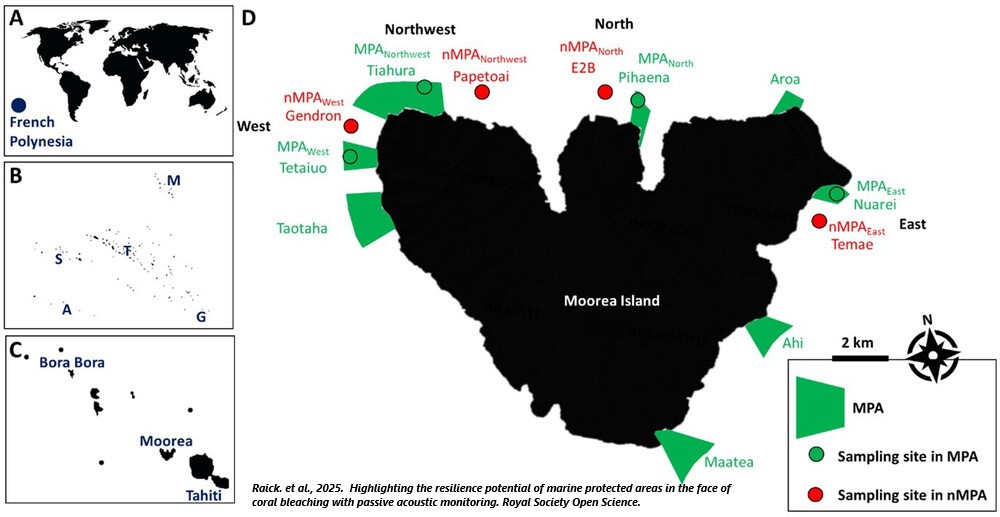
Marine Protected Areas (MPAs) can increase the resilience of reef communities to disturbances, playing a role in sheltering biodiversity from climate-related impacts. To determine if the protection status allows for better resilience after coral bleaching events, we recorded soundscapes of eight reefs of Moorea Island (French Polynesia). We compared the biophony of MPAs to the one of adjacent non-protected zones recorded in 2015, before two bleaching events (2016 and 2019), to the one in 2021. Then, the biophony from 2021 was compared within and outside MPAs. We hypothesize that differences in the biophony between these periods vary within and outside MPAs. The main result is an increase in the nocturnal high frequency (2–22 kHz) mass phenomena of benthic invertebrates, observed at sites with higher coral cover post-bleaching compared to pre-bleaching: nocturnal power spectral density (PSD) and peak frequency of invertebrate sounds varied between 2015 and 2021. For fish sounds, no daytime difference was observed, while nocturnal PSD was higher in 2021. These observations reflect distinct bleaching histories. High-frequency PSD measurements and the associated frequency values demonstrated strong correlation with temporal changes in coral cover. We suggest including it in long-term reef monitoring due to its complementary nature with respect to classical methods.














